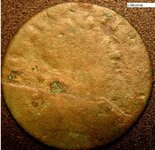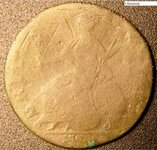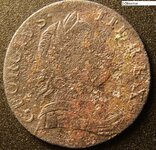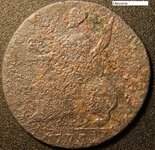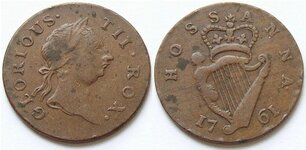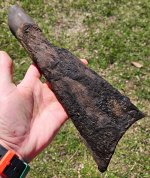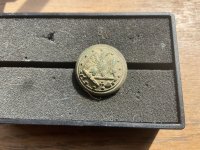checkman
Jr. Member
- Dec 11, 2011
- 39
- 9
- Detector(s) used
-
Minelab CTX 3030
Minelab Etrac, Sunray X-1, 10x12SEF, Sunray x-5
Garrett AT-Pro & Propointer
Teknetiks Delta 4000
- Primary Interest:
- Metal Detecting
I recently found a very old pocket spill. I had unearthed an 1796 LC, an 1833 LC, 1795 LC, and 3 coins that I am not sure of. These coins appear to have spent quite some time in the ground and the Pennsylvania climate has taken it's toll on them. I will provide as much info as I can.
These coins appear to be copper.
Coin #1 is 27.51mm in diameter, and weighs 6.59g.
Coin #2 is 27.46mm in diameter, and weighs 6.42g.
Coin #1 has what looks like a crack in the picture. However, it is not a crack. It is like a ledge that looks like it was there from when the coin was struck.
I found another one that is 27.91mm in diameter, and weighs 7.58g, but it is severely corroded so I did not include pictures of it.
Any help would be greatly appreciated.
These coins appear to be copper.
Coin #1 is 27.51mm in diameter, and weighs 6.59g.
Coin #2 is 27.46mm in diameter, and weighs 6.42g.
Coin #1 has what looks like a crack in the picture. However, it is not a crack. It is like a ledge that looks like it was there from when the coin was struck.
I found another one that is 27.91mm in diameter, and weighs 7.58g, but it is severely corroded so I did not include pictures of it.
Any help would be greatly appreciated.


